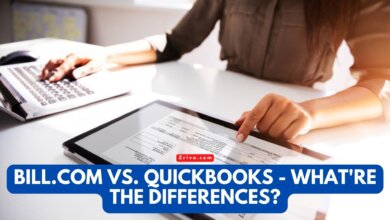Pass-Through Entities
The business structure you choose directly impacts how much tax you pay. The most common pass-through entities include sole proprietorships, partnerships, and S corporations.

Contents
A pass-through entity is a business structure in which income from the company passes through to its owners or shareholders and gets reported on their personal tax returns. This is in contrast to C corporations, which are taxed at the corporate level and then taxed again on their dividends to shareholders, a process known as double taxation. Most small businesses—and some larger ones—are structured as pass-through entities. The most common pass-through entities include sole proprietorships, partnerships, and S corporations.
Generally speaking, pass-through entities are simpler and less costly to set up and maintain than C corporations. However, there are some disadvantages to operating a pass-through entity, especially in terms of taxes. Pass-through entities pay no corporate taxes but are subject to state and local taxes. This can be a real burden, particularly given the federal Tax Cuts and Jobs Act’s SALT cap, which puts a $10,000 limit on how much state and local taxes you can deduct from your federal tax return.

How Do Pass-through Entities Pay Taxes?
Pass-through entities are not subject to the corporate income tax but report their profits on each owner’s personal income tax return using Form 1040. The amount of tax each owner pays depends on his or her income tax bracket. Some owners must pay self-employment taxes, including Social Security and Medicare. This is true of sole proprietorships, limited liability companies, and some partnerships and S corporations that elect to be taxed like pass-through entities.
Generally, pass-through entity earnings are divided according to each owner’s ownership percentage. For example, a limited liability company with three equal members — Adam, Janice, and Clarise — might have an earned revenue of $150,000. This is then split among the owners, and each one reports their share of the earnings on their personal tax return using Schedule E. In addition to federal taxes, each pass-through entity owner must pay state and local income taxes on their share of the company’s revenues. Because of this, most pass-through entity operating agreements require the company to make sufficient cash distributions to cover each member’s personal tax liability.
Advantages of Pass-through Entities
Unlike C corporations, pass-through entities avoid double taxation by passing the company’s profits directly to its owners or members, who then pay individual income taxes on the earnings. This business structure also gives the advantage of tax deductions that can lead to significant savings. In addition to federal corporate income taxes, some states impose additional business taxes on pass-through entities. These taxes might take the form of a franchise or annual fees. These taxes might add up and significantly decrease the company’s overall value. As a result, many companies choose to be pass-through entities for financial and tax reasons. Most small businesses operate as pass-through entities and account for most private-sector jobs in most states.
Pass-through entities are generally easy to set up and run. In fact, you automatically become a sole proprietorship, a type of pass-through entity, as soon as you start doing business by yourself or with your spouse. You can also form a partnership or a limited liability company (LLC) to avoid becoming a pass-through entity, although this requires more paperwork and formalities. It’s important to consult a lawyer or accountant before deciding on the business structure that’s right for you.

Disadvantages of Pass-through Entities
The main disadvantage of a pass-through entity is that owners are personally liable for the business’s debts. This differs from a regular incorporated C corporation, which enjoys limited liability protection. Additionally, the income that flow through a pass-through entity is taxed twice. First, it’s taxed at the corporate level as a business. Then, when the company distributes its profits to shareholders, these shareholders are taxed again on their dividends. This double taxation is why many people avoid pass-through entities in favor of a C corporation.
Moreover, while pass-through entities do not pay federal corporate taxes, they are still subject to some state business taxes. For example, some states impose a franchise tax or annual fee for all incorporated businesses. Finally, despite their popularity, pass-through entities are not always the best option for small business owners. For one, their taxes are higher than those of C corporations. This is because all income flows through to owners and is taxed as personal income, which may result in a higher total tax burden, depending on their individual income tax brackets. Also, the new 20% pass-through income deduction introduced in 2018 is only valid through 2025, and its eligibility depends on personal income limitations and business type.





